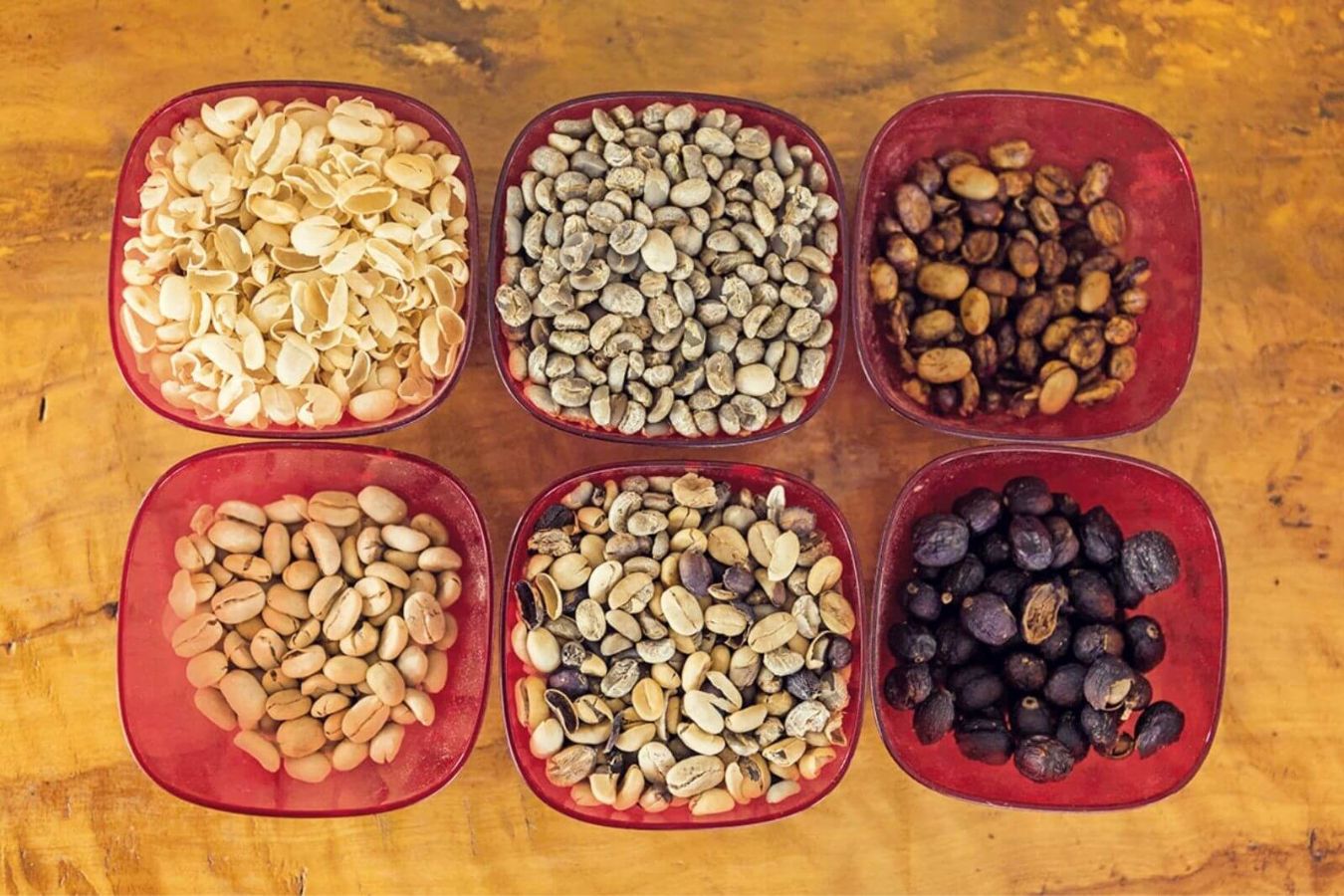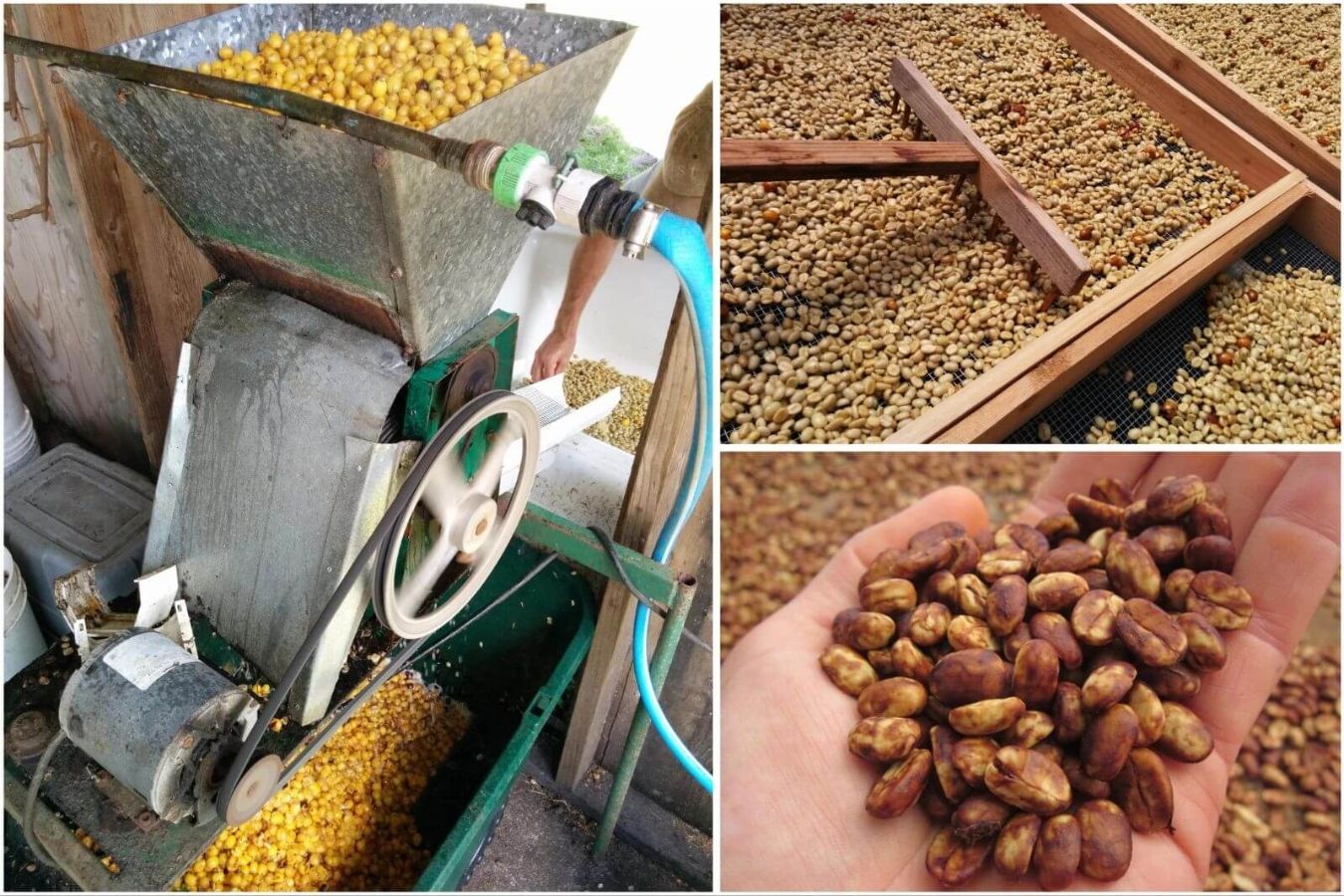
What Is Honey Processing and How Does It Work? Coffee beans are the seeds of the coffee fruit, not beans. Yes, it is correct. Bright red (or sometimes yellow or orange) fruit is the source of your favorite caffeinated beverage.
However, before roasting, the coffee cherries’ skins and meat must be removed when they are released. It was dried to a moisture content of about 11%. The two most frequent ways for removing the skin and meat are 1) washing the coffee with water (Wash) and 2) drying the coffee in the sun before placing it in the husker (natural/dry processing).
And the processing method in between the two procedures mentioned is “Honey.” While the coffee is being dried, some of the meat inside the pods and “mucus” remains.

So, why is it known as honey processed coffees? If it weren’t for a coincidence, it could be labeled “mucus-processed coffee.” The mucus has a honey-like sweetness to it. Although this term has nothing to do with coffee, it is noted for its sweet flavor. What’s the Difference Between Yellow, Red, and Black Honey? What is the honey processing method now that we know?
It’s time to examine the various techniques of honey processing. Although these terms are rarely found on coffee containers, producers and exporters frequently refer to coffee as white honey, yellow honey, red honey, and black honey. After being mechanically cleaned, white and yellow flame have less mucous.
On the other hand, red and black honey coffee have more mucilage. As a result, you’ll be able to drink more coffee. Is it possible to categorize the descriptions further? It is, in fact, conceivable. However, moisture, temperature, and sugar oxidation all influence honey processing, therefore there is no specific recipe.
Similarly, the various honey-processed coffees are divided into the following categories: Honey, both white and yellow White honey coffees are usually machine cleaned, leaving little mucus surrounding the beans. The yellow honey coffee is usually rinsed out, and there is typically a lot of mucilage around the beans.
However, the criteria used to identify which honey process is used on different farms will change slightly. While naming each honey method is still valid, it’s also a good idea to discuss the exact process that followed this approach while buying or selling coffee. Any misunderstandings will be avoided in this manner.
Honey in three colors: gold, red, and black. The amount of light and drying time the seeds receive while exposed is the difference between these three elements. Black honey develops as a result of moisture and slower growth. A lack of humidity causes red, and a lack of water causes gold. Warm, low-humidity periods will be used to dry gold honey—this aids in drying.
On the other hand, the red flame is processed in a shady environment to reduce drying time. The grain will be exposed to more moisture as a result of this. Black honey takes longer to dry and is dried even more in the shade.
Why is it necessary to process darker honey?
The more labor involved, the darker the honey color. To avoid fermentation and mold growth, black honey processed coffee must be constantly monitored. They’re also more prone to losing their freshness. As a result, they should be roasted as soon as the green kernels arrive at the roaster, especially if the sweet honey flavor is desired.
So, if black honey is significantly more challenging to produce, why did you choose this method? Darker honey makes a fantastic espresso that almost tastes like a drop of love has been dropped into your cup. When produced as a filter coffee, yellow and white processed coffee, on the other hand, has a cleaner flavor.
How do beekeepers manage honey processing? I inquired how Francisco, Wayner, and Cesar work honey processing to produce the desired color. They say that it necessitates a significant amount of effort. They undertake field/floor visual assessments and obtain samples during the 60-90 day harvest season. Because he is both an exporter and a farmer, Francisco is unique.

He is the ideal of preaching what he preaches, continually seeking ways to better Costa Rica’s coffee business. As a result, he began a new craze: color-coded drying racks. These rigs aid farmers throughout drying, helping them identify and process beans more effectively. He shares color-coded charts with other farmers that have adopted the approach. And it is his ambition for it to be used by all farmers, companies, and even roasters.
What Do Different Honey Processing Methods Mean To You? Have you considered grading your honey-processed coffee as a producer or perhaps going beyond it? Are your importers and direct trading partners teaching you how to effectively emphasize their work on your coffee if you’re a roaster? Are you seeking coffee with dried fruit or chocolate undertones if you’re a consumer? Or, as a marketer, will you explain the differences between the processing kinds to your audience?
It’s difficult to explain the complexities of multiple honey processing procedures to consumers without overwhelming them. A one-line explanation appears to be far too brief. Is it possible that an infographic or a visual chart would be a better option? Coffee has a long and illustrious history.
With so many various processing methods and flavor attributes to choose from, even the tiniest variances in color amongst honey processing methods are valuable. I’m hoping they’ll get an opportunity to shine and be noticed.
Honey processed coffees
I’ve often compared tasting coffee variations to tasting wine. Green (unroasted) coffee beans, like wine grapes, have a wide range of flavors. Aside from crop and region differences, the method by which freshly picked cherries are processed into green coffee beans—ready for shipment and eventual roasting—creates distinct differences in the way coffee tastes.
Coffee producers have traditionally used two methods to process their beans: natural (or dry) and washed. The honey (or pulped natural) process is a hybrid that combines elements of both techniques to create new flavor distinctions. There is also a wet-hulled method, which is primarily used in Indonesia and will be discussed in another post.
Yellow Red & Black Honey Processed Coffee: Yellow honey
White honey coffees are typically washed mechanically, leaving little mucilage around the bean. Yellow honey coffees are frequently semi-washed, with slightly more mucilage remaining around the bean.
However, the definitions of these terms will differ from farm to farm. These labels are useful, but it is also important to discuss the processes used when purchasing or selling beans. You’ll avoid any miscommunication this way.
Yellow Red & Black Honey Processed Coffees: Black honey
Black honey process: The amount of light and drying time exposed to the beans is what distinguishes these three. More humidity and a slower growth rate result in black honey. A little fewer humidity results in red, and even less in gold.
Gold honey will be dried in warm, sunny weather with low humidity. This aids in the drying process. Red honey, on the other hand, is processed under more shade to slow the drying time. This increases the amount of humidity to which the beans are exposed. Black honey takes even longer to dry and is dried in even more shade.